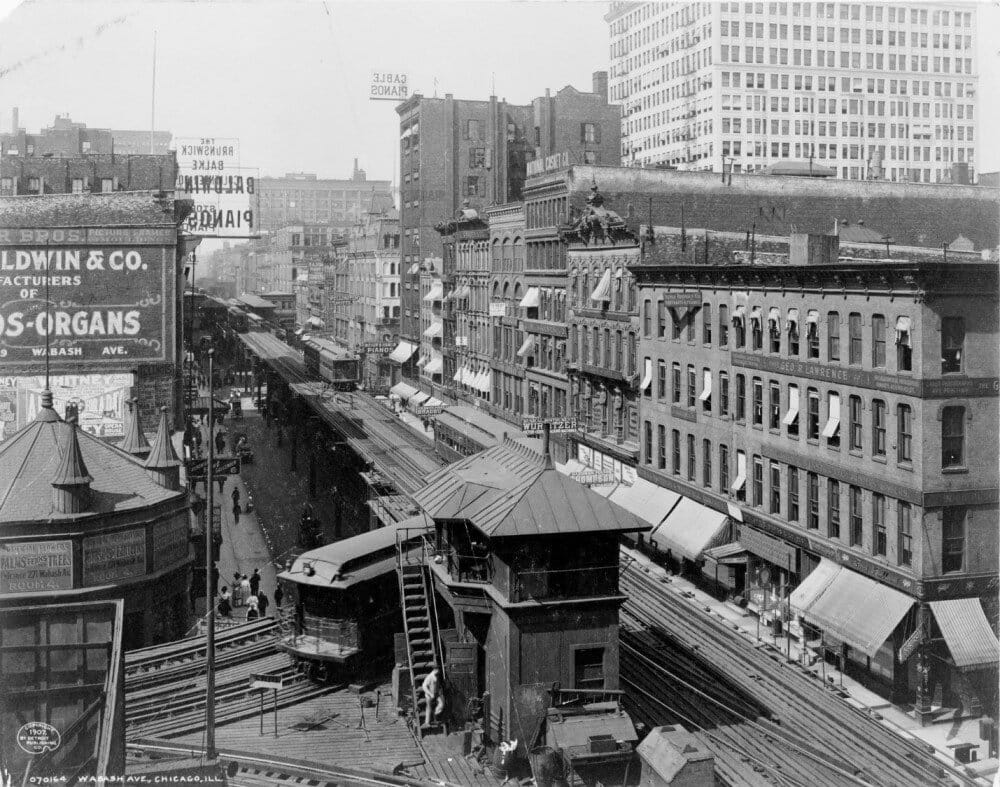

Chicago’s Piano History
A few years ago, I saw and enlarged an old photograph of the L junction at Van Buren and Wabash. This short section of Wabash was full of piano companies: Baldwin & Co., Wurlitzer, Cable Piano, Mason and Hamlin.
A few years ago, I saw and enlarged an old photograph of the L junction at Van Buren and Wabash. This short section of Wabash was full of piano companies: Baldwin & Co., Wurlitzer, Cable Piano, Mason and Hamlin.
by Ed McDevitt, CAC docent, class of 2010
While doing research for the CAC’s Near North Pub Tour, I learned about a building at the corner of Clark Street and Chicago Avenue called the Bush Temple of Music. Today, the Bush Temple of Music is a Chicago landmark and included on the National Register of Historic Places. In that building, Bush and Gerts Piano Company (the owner of the building) produced 50,000 pianos in its first 25 years. That little fact just amazed me.
Then I remembered the Wabash Avenue photo. I wondered, “What was it with Chicago and pianos?”
I knew that parlor pianos were favorite instruments in the Victorian and Edwardian eras. But one company making 50,000 pianos? That really surprised me. So did that concentration of piano companies on Wabash Avenue.
With some research, I discovered the world’s leading piano manufacturing center in the late 19th and early 20th centuries was Chicago. The instrument was extremely popular during this era among the middle-class in the U.S. and Europe. Status, a love of music and an interest in arts and culture drove people to buy what was then—and still is—an expensive piece of furniture. They purchased millions of pianos, and the less expensive pump organs of the time.
My family was of modest means when I was growing up. We lived, however, in a mostly upper middle-class town in Massachusetts. Most of my friends had at least an upright piano. Many of them had grand pianos.
It hadn’t occurred to me before now that they were keeping a tradition that persisted, despite the advent of radio, movies and television. And they played them. So did I, taking the opportunity to sit at their keyboards whenever I could, unaware that those pianos represented a demonstration of status. To me, they simply made music.